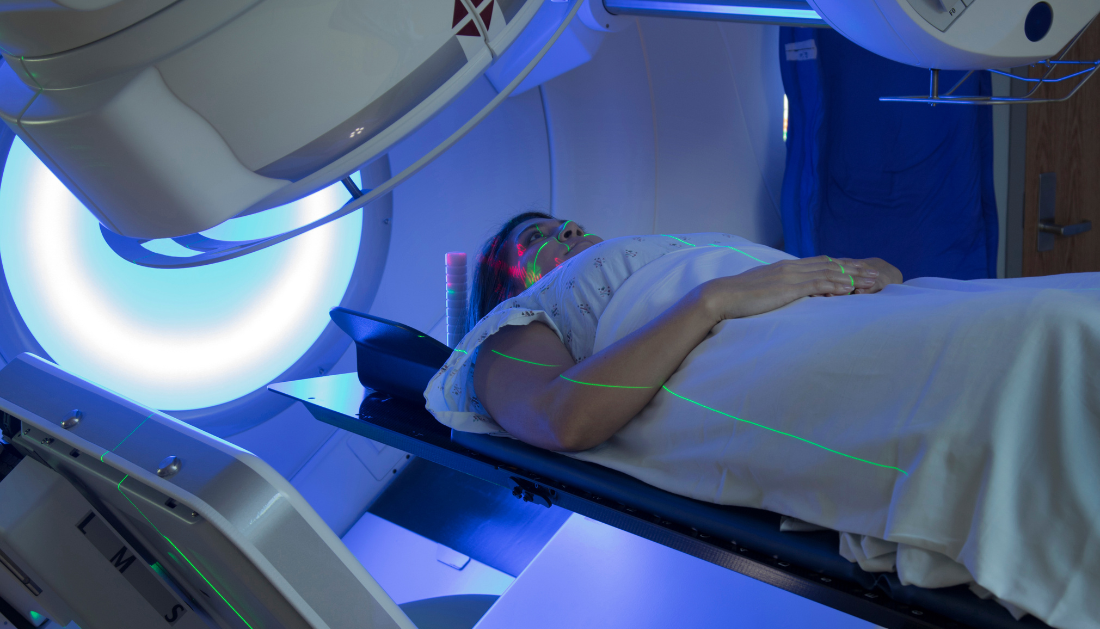

New materials created at the University of Surrey may pave the way for a new generation of flexible X-ray detectors with applications ranging from cancer therapy to improved airport scanners.
X-ray detectors have traditionally been composed of heavy, rigid materials such as silicon or germanium. New, flexible detectors are less expensive and can be molded to scan things, boosting accuracy when screening patients and lowering danger when imaging malignancies and giving radiotherapy.
“This new material is flexible, low-cost, and sensitive,” said Dr. Prabodhi Nanayakkara, who led the research at the University of Surrey. The fact that this substance is tissue comparable is interesting. This opens the door to live dosimetry, which is now impossible with existing technology.”
If a broad area needs to be covered, most X-ray detectors on the market today are heavy, rigid, energy-consuming, and expensive.
Organic semiconductors, which are composed of hydrogen and carbon, provide a more flexible alternative, but do not create as detailed an X-ray image as classic detectors.
To address this issue, researchers at the University of Surrey’s Advanced Technology Institute built ink-based devices by combining modest quantities of high atomic number elements with an organic semiconductor.
Based on prior research in this sector, the team’s new detector acts more like human flesh under X-rays, potentially leading to new, safer approaches for administering radiation, mammography, and radiography. “Tissue equivalent curved organic X-ray detectors utilizing high atomic number polythiophene analogs,” published in Advanced Science.
“This new technology could be used in a variety of settings, such as radiotherapy, scanning historical artifacts, and in security scanners,” said Professor Ravi Silva, director of Surrey’s Advanced Technology Institute. The University of Surrey, in collaboration with its spin-off SilverRay Ltd, continues to set the standard for flexible X-ray detectors—we’re thrilled to see the technology showing great potential for a variety of applications.”
“We have been developing heavy analogs of traditional organic semiconductors for some time, and we were intrigued when Dr. Imalka Jayawardena suggested their application in X-ray detectors,” said co-author Professor Martin Heeney of Imperial College London. These findings are highly interesting, especially given that this was the first material studied, and there is lots of room for further advancement.”
more recommended stories
 Safer Allogeneic Stem Cell Transplants with Treg Therapy
Safer Allogeneic Stem Cell Transplants with Treg TherapyA new preclinical study from the.
 AI in Emergency Medicine and Clinician Decision Accuracy
AI in Emergency Medicine and Clinician Decision AccuracyEmergency teams rely on rapid, accurate.
 Innovative AI Boosts Epilepsy Seizure Prediction by 44%
Innovative AI Boosts Epilepsy Seizure Prediction by 44%Transforming Seizure Prediction in Epilepsy Seizure.
 Hypnosis Boosts NIV Tolerance in Respiratory Failure
Hypnosis Boosts NIV Tolerance in Respiratory FailureA New Approach: Hypnosis Improves NIV.
 Bee-Sting Microneedle Patch for Painless Drug Delivery
Bee-Sting Microneedle Patch for Painless Drug DeliveryMicroneedle Patch: A Pain-Free Alternative for.
 AI Reshapes Anticoagulation in Atrial Fibrillation Care
AI Reshapes Anticoagulation in Atrial Fibrillation CareUnderstanding the Challenge of Atrial Fibrillation.
 Hemoglobin as Brain Antioxidant in Neurodegenerative Disease
Hemoglobin as Brain Antioxidant in Neurodegenerative DiseaseUncovering the Brain’s Own Defense Against.
 Global Data Resource for Progressive MS Research (Multiple Sclerosis)
Global Data Resource for Progressive MS Research (Multiple Sclerosis)The International Progressive MS Alliance has.
 AI Diabetes Risk Detection: Early T2D Prediction
AI Diabetes Risk Detection: Early T2D PredictionA new frontier in early diabetes.
 Cancer Cells Learn to Self-Report: A New Frontier in Immunotherapy
Cancer Cells Learn to Self-Report: A New Frontier in ImmunotherapyHow a Drug Complex Enables Immune.

Leave a Comment